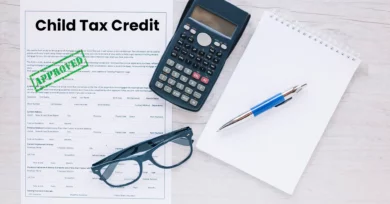Hello, my wonderful readers! Unlocking the full potential of your workforce begins with recognizing and rewarding their hard work and dedication. Employee rewards serve as a cornerstone for fostering motivation, engagement, and loyalty within any organization. In this blog, we delve into the transformative power of utilizing a Gratuity Calculator to enhance your employee rewards program. By actively engaging with this tool, employers can ensure that their employees receive fair and competitive gratuity benefits commensurate with their tenure and contributions. Gone are the days of arbitrary calculations and guesswork; the Gratuity Calculator provides a transparent and systematic approach to determining gratuity amounts, empowering employers to demonstrate their appreciation tangibly and equitably.
Join us as we explore the myriad benefits of integrating this innovative tool into your HR arsenal and witness firsthand its positive impact on employee morale, retention, and overall organizational success. Let’s embark on a journey to elevate your employee rewards strategy to new heights and cultivate a culture of appreciation and recognition within your workplace
Why Employee Rewards Are Necessary?
In today’s competitive business landscape, an organization’s success hinges significantly on its ability to attract, retain, and motivate top talent. Central to achieving this goal is the implementation of effective employee rewards programs. These programs go beyond traditional compensation structures to encompass various incentives and recognition initiatives to acknowledge and appreciate employees’ contributions. Let’s delve into the reasons why employee rewards are not just desirable but necessary for organizational success.
Boosting Motivation and Morale
Employee rewards play a crucial role in boosting motivation and morale within the workforce. Employees who feel valued and appreciated for their hard work and dedication are likelier to remain engaged and committed to their roles. Recognition through rewards serves as positive reinforcement, encouraging employees to continue performing at their best and strive for excellence in their work.
Example: Monthly performance bonuses or public recognition programs for outstanding achievements can significantly boost employee motivation and morale.Enhancing Employee Engagement
Engaged employees are the lifeblood of any organization. They are more productive, committed, and aligned with the company’s goals and values. Employee rewards programs promote employee engagement by fostering a sense of belonging and ownership among staff members. When employees are rewarded for their contributions, they feel a deeper connection to the organization and are likelier to go above and beyond.
Example: Implementing a peer-to-peer recognition program where employees can nominate their colleagues for rewards based on exceptional teamwork or innovation can foster a culture of collaboration and engagement.
Improving Retention Rates
Employee turnover can be a significant drain on organizational resources, both in terms of time and money. Retaining top talent is essential for maintaining continuity, productivity, and institutional knowledge within the company. Employee rewards programs play a vital role in improving retention rates by creating a sense of loyalty and commitment among employees. When employees feel adequately recognized and rewarded for their contributions, they are less likely to seek opportunities elsewhere.
Example: Offering competitive salary packages, career development opportunities, and personalized recognition programs can help retain top performers and reduce turnover rates.
Fostering a Culture of Innovation
Innovation is the cornerstone of sustainable growth and competitive advantage in today’s fast-paced business environment. Employee rewards programs can play a pivotal role in fostering a culture of innovation within the organization by incentivizing creativity, risk-taking, and problem-solving. When employees know their innovative ideas and contributions are valued and rewarded, they are more likely to proactively seek opportunities to drive positive change and innovation within the company.
Example: Implementing a rewards program for employees who propose innovative solutions to business challenges or contribute to developing new products or services can stimulate a culture of creativity and innovation.
Enhancing Team Collaboration and Cohesion
Effective teamwork is essential for achieving organizational goals and objectives. Employee rewards programs can help enhance team collaboration and cohesion by recognizing and rewarding collective achievements and contributions. When employees are rewarded for their teamwork and collaboration efforts, they are more likely to collaborate effectively with their colleagues, share knowledge and resources, and support one another in achieving common goals.
Example: Implementing team-based rewards programs, such as team outings or bonuses tied to collective performance targets, can foster a sense of camaraderie and cooperation among team members.
Promoting Employee Well-being and Work-Life Balance
Employee rewards programs can also promote employee well-being and work-life balance. In today’s fast-paced work environment, employees often face high levels of stress and burnout, which can negatively impact their health and productivity. Rewarding employees with flexible work arrangements, wellness benefits, or extra time off can help promote a healthier work-life balance and improve employee satisfaction and well-being.
Example: Offering additional vacation days or wellness incentives, such as gym memberships or mindfulness workshops, can demonstrate the organization’s commitment to supporting employees’ physical and mental health.
Employee rewards are not just a nice-to-have perk but a fundamental necessity for organizations looking to thrive in today’s competitive business landscape. Implementing effective employee rewards programs has manifold benefits, from boosting motivation and morale to improving retention rates and fostering a culture of innovation. Organizations can cultivate a more engaged, motivated, and productive workforce by investing in employee rewards, driving long-term success and sustainability.
How To Use A Gratuity Calculator For Employee Rewards?
Gratuity is a significant component of employee rewards and compensation, particularly in industries where long-term service is valued. A Gratuity Calculator can be a powerful tool for employers to ensure fair and accurate employee gratuity payouts. Let’s explore utilizing a Gratuity Calculator to enhance employee rewards effectively.
Understand the Legal Framework:
Before discussing the specifics of using a Gratuity Calculator, employers must understand the legal framework governing gratuity payments in their jurisdiction. Gratuity laws can vary significantly from country to country, and it’s essential to comply with local regulations to avoid legal issues.
Example: In India, the Payment of Gratuity Act, 1972, governs gratuity payments to employees. Employers must understand the eligibility criteria, calculation method, and other legal requirements outlined in the Act.
Gather Employee Information:
The first step in using a Gratuity Calculator is to gather relevant employee information required for the calculation. This typically includes the employee’s basic salary, length of service, and any additional factors that may impact the gratuity amount, such as bonuses or allowances.
Example: Employers may need to collect data such as the date of joining, the date of resignation or retirement, and the last salary drawn by the employee to input into the Gratuity Calculator.
Input Data Into the Calculator:
Once the necessary employee information is gathered, it’s time to input the data into the Gratuity Calculator. Most Gratuity Calculators are user-friendly tools that prompt users to enter the required information into designated fields.
Example: Employers can input the employee’s years of service, last drawn salary, and any relevant details into the Gratuity Calculator interface.
Verify Calculation Method:
Before finalizing the gratuity calculation, employers should verify that the Gratuity Calculator uses the correct calculation method as per the applicable laws or company policies. Double-checking the calculation method ensures accuracy and helps avoid errors or discrepancies.
Example: Employers should ensure that the Gratuity Calculator calculates gratuity based on the formula prescribed by the relevant legislation or company policy, taking into account factors such as the number of years of service and the employee’s salary.
Review and Confirm Results:
Once the Gratuity Calculator generates the gratuity amount based on the input data, employers should review the results carefully to ensure accuracy. It’s essential to double-check all input data and calculations before confirming the final gratuity payout to the employee.
Example: Employers should review the gratuity calculation generated by the Gratuity Calculator to verify that it aligns with the employee’s length of service, salary, and other relevant factors.
Communicate Gratuity Payout to Employee:
After confirming the gratuity amount using the Gratuity Calculator, employers should communicate the payout details to the employee clearly and transparently. Providing employees with written documentation of the gratuity calculation helps maintain trust and transparency in the reward process.
Example: Employers can issue an official letter or statement to the employee outlining the gratuity amount, calculation method used, and any other relevant details regarding the payout.
Process Gratuity Payment:
Once the gratuity payout details are communicated to the employee and finalized, employers should process the gratuity payment according to the applicable laws and company policies. Timely and accurate gratuity payments demonstrate the organization’s commitment to valuing and rewarding its employees.
Example: Employers should ensure that the gratuity payment is processed within the stipulated time frame and complies with the payment method specified in the applicable laws or company policies.
Utilizing a Gratuity Calculator for employee rewards can streamline the gratuity calculation process, ensuring accuracy and fairness in gratuity payouts. By following the steps outlined above and leveraging the functionalities of a Gratuity Calculator, employers can effectively reward employees for their dedicated service and contributions, fostering a culture of appreciation and recognition within the organization.
Conclusion
Leveraging a Gratuity Calculator is paramount for optimizing employee rewards and fostering a culture of appreciation within organizations. By employing this tool, employers ensure accuracy and fairness in gratuity payouts, thereby boosting employee morale and loyalty. The active utilization of a Gratuity Calculator streamlines the reward process, empowering employers to recognize employees’ dedication and contributions effectively. Through transparent and systematic calculations, organizations demonstrate their commitment to valuing their workforce, ultimately enhancing employee satisfaction and retention rates. Moreover, utilizing a Gratuity Calculator reinforces the organization’s reputation as an equitable and employee-centric workplace, attracting top talent and driving long-term success.
Embracing innovative solutions like the Gratuity Calculator enhances the efficiency of reward systems and cultivates a culture of trust and transparency, where employees feel valued and motivated to excel. By embracing technology to optimize employee rewards, organizations pave the way for sustained growth, employee engagement, and organizational excellence in the ever-evolving business landscape.
Also Read:
Why is Corporate Travel Needed for Business Professionals?
Brand Recognition In Orlando: Tricks to Make Your Brand Famous!






